
by Matt Lollar | May 17, 2019
Are you looking for more selective herbicide options for annual beds and around shrubs and trees? The Santa Rosa County Extension Office will be hosting guest speaker Dr. Chris Marble from the UF/IFAS Mid-Florida Research & Education Center on Thursday, May 23. Dr. Marble is a Nationally Renowned Weed Scientist who has published numerous research and extension publications. 2 CEUs available in LCLM, Limited Lawn & Ornamental, Commercial L&O, O&T, Natural Areas, ROW, and Private Ag. Pre-registration fee is $15, or $20 registration at the door the day of the event (includes lunch and resources). Pre-register online at Eventbrite Ticket or bring cash, check, or money order to the Santa Rosa County Extension Office, 6263 Dogwood Dr., Milton, FL before May 23. For additional questions, please contact Matt Lollar at mlollar@ufl.edu or 850-623-3868.
SCHEDULE
9:30 Registration & Welcome
9:45 Presentation Begins
11:30 Question & Answer w/Dr. Marble
11:45 Evaluation & CEUs
12:00 Lunch & Discussion on Glyphosate Registration
12:30 Adjourn
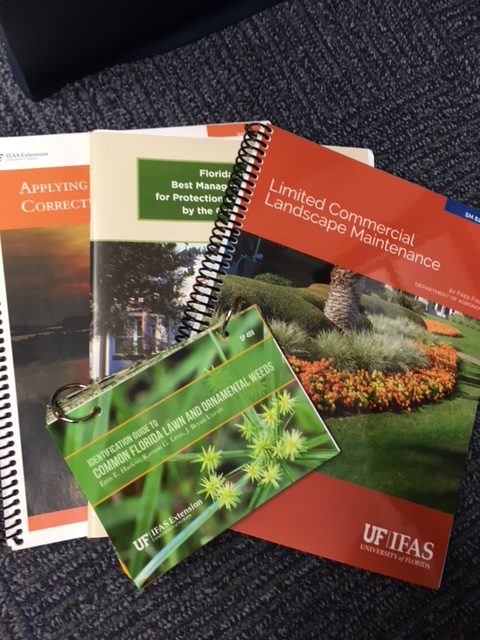
by Julie McConnell | Sep 25, 2018
Finding professional landscape services for your home or business can be difficult. Unlike many skilled trades in Florida, landscapers/groundskeepers are mostly unregulated. No state exams exist to determine mastery of the basic skills required to perform lawn or landscape maintenance. Ultimately, consumers are left on their own to determine who to hire.
As UF/IFAS Extension Agents, we cannot endorse or provide referrals to companies; however, we can offer some guidance to help you with your search for qualified professionals.
- Be an informed consumer. You don’t have to be an expert in landscapes. Instead you should have an idea of what you envision for your landscape. Familiarize yourself with the type of turf grass and plants you want and learn what the basic maintenance is for their upkeep.
The Florida Friendly Landscaping™ program is a great place to start. Most Extension offices have free books on how to care for Florida landscapes. Or you can find online resources at www.deactivated_site
- Fertilizer and pesticide applications DO require state certifications.
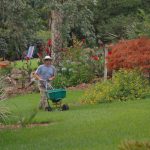
Commercial landscape fertilizer applicators must obtain state certification.
- Fertilizer applicators for hire must maintain the Limited Urban Fertilizer Applicator Certification (Chapter 482.1562, Florida Statutes). Each applicator must have an individual certification. No one can “work under” another applicator’s certificate.
- Pesticide applicators (any substance applied with the intent to kill or inhibit growth of weeds, insects, nematodes, fungi, bacteria, etc.) have two options depending on application site and qualifications.
- Residential or commercial building turf pesticide applicators must hold the Commercial Lawn & Ornamental Pest Control License or be a current Employee Cardholder of the Certified Pest Control Operator
- Residential or commercial ornamental beds (trees, shrubs, flowers) pesticide applicators can hold either Commercial Lawn & Ornamental, as above, or Limited Commercial Landscape Maintenance Certification
- You can check to see if the applicator has a current certification by visiting http://aessearch.freshfromflorida.com/PersonSearch.asp You must enter the applicator’s legal name (name listed on his driver’s license, no nicknames) or their certification number (this will start with two letters)
- Ask about affiliations with professional organizations. Although landscapers are not required to obtain state certifications (excluding fertilizer and pesticide applicators), many take the extra steps to increase knowledge and keep up with industry standards and trends. Voluntary participation in organizations such as Florida Pest Management Association (FPMA), Florida Nursery, Growers and Landscape Association (FNGLA), Florida Turfgrass Association (FTGA), Tree Care Industry Association (TCIA), International Association of Arboriculture (ISA), etc. Some of these groups offer certification programs for professionals to help them increase knowledge.
- Word of mouth/observation. If you see a landscape that looks good, ask who they use and if they are pleased with their service. Talk to friends and colleagues for recommendations.
- Check references. Always ask for references and contact them. Yes, they may only give you the names of happy clients, but you can still ask questions to get a feel for the type of service offered and assess the longevity of the company.
Landscape professionals looking for certification classes should visit Green Industries in the Panhandle Upcoming Events page. 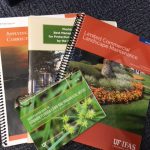
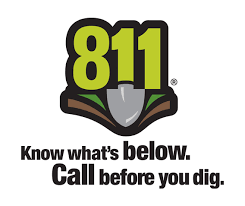
by Sheila Dunning | Apr 9, 2018
 This month, recognized by the Senate and Florida’s governor, reminds diggers why calling 811 before all outdoor digging projects is important to your safety. Before installing a mailbox, fence, deck, garden or tree make sure to call Sunshine 811 to have underground lines marked. 811 is the free national number designated by the Federal Communications Commission. It notifies utility companies, who in turn send their professional locators to identify and mark the appropriate location of underground line with paint and flags in colors that identify the utility type. The following colors represent the seven various utilities: red, orange, blue, green, yellow, purple and white. To see which colors correspond with each utility go to: http://www.call811.com/faqs/default.aspx.
This month, recognized by the Senate and Florida’s governor, reminds diggers why calling 811 before all outdoor digging projects is important to your safety. Before installing a mailbox, fence, deck, garden or tree make sure to call Sunshine 811 to have underground lines marked. 811 is the free national number designated by the Federal Communications Commission. It notifies utility companies, who in turn send their professional locators to identify and mark the appropriate location of underground line with paint and flags in colors that identify the utility type. The following colors represent the seven various utilities: red, orange, blue, green, yellow, purple and white. To see which colors correspond with each utility go to: http://www.call811.com/faqs/default.aspx.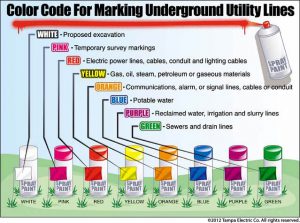
Hitting an underground utility line while digging can cause injuries, utility service outages to an entire neighborhood and damage to the environment. Failure to call before digging results in one unintentional utility hit every eight minutes nationwide. You could also be financially affected with costly fines and high repair costs.
Calling 811 in Florida is the law. At least two full business days before digging, do-it yourselfers and professional excavators must contact 811 by phone to start the process of getting underground utility lines marked. This is a free service. Be sure that all utilities have been marked before grabbing the shovel. Follow up on your one call ticket by contacting 811 again on the third day. For more information on Florida’s law, visit www.Sunshine811.com.
by Beth Bolles | Sep 8, 2017
Trees are a valuable resource. They add beauty to our community, serve as food and shelter for animals, filter the air, and cool urban environments. Trees can also be a liability when poorly maintained, damaged, or diseased. There are often times when an arborist is needed to help determine the best course of action for the tree.
There are many individuals who are involved in the tree care and removal business. Not all of these people are certified in the care of trees. Arborists are people who receiving training in the planting, care, and maintenance of trees.
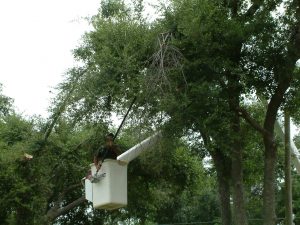
Professional arborists have specialized training to create safe, structurally sound trees, even when damaged by storms. Photo by Beth Bolles, UF IFAS Extension Escambia County
Certified arborists go through a voluntary certification process with the International Society of Arboriculture which means that they have at least three years experience and have passed a comprehensive examination developed by tree experts. A certified arborist maintains certification by attending regular training courses.
An arborist may also be a member of another organization which helps professionals stay up-to-date on tree care techniques and information. These include the National Arborist Association and the American Society of Consulting Arborists.
Hiring an arborist to work on your trees is important for several reasons. An arborist can evaluate the tree and determine the steps necessary to create a healthy specimen. In regards to pruning, the professional will determine what type of pruning is necessary and remove branches properly.
Professionals will also perform tree care practices that are recommended by University research. A few practices that the arborist would not perform include topping trees, using climbing spikes on trees which are not being removed, and making flush cuts against the trunk.
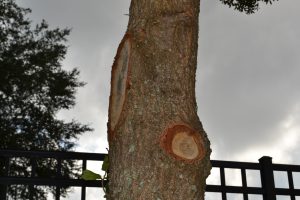
Flush cuts are damaging to trees and can create a future hazard in your landscape. Photo by Beth Bolles, UF IFAS Extension Escambia County
Finally arborists have the skills and equipment to safely and efficiently prune or remove trees. This includes personal and property damage insurance and workers compensation insurance.
Next time you need tree work or advice, hire a professional for the job. It will definitely be worth the investment.
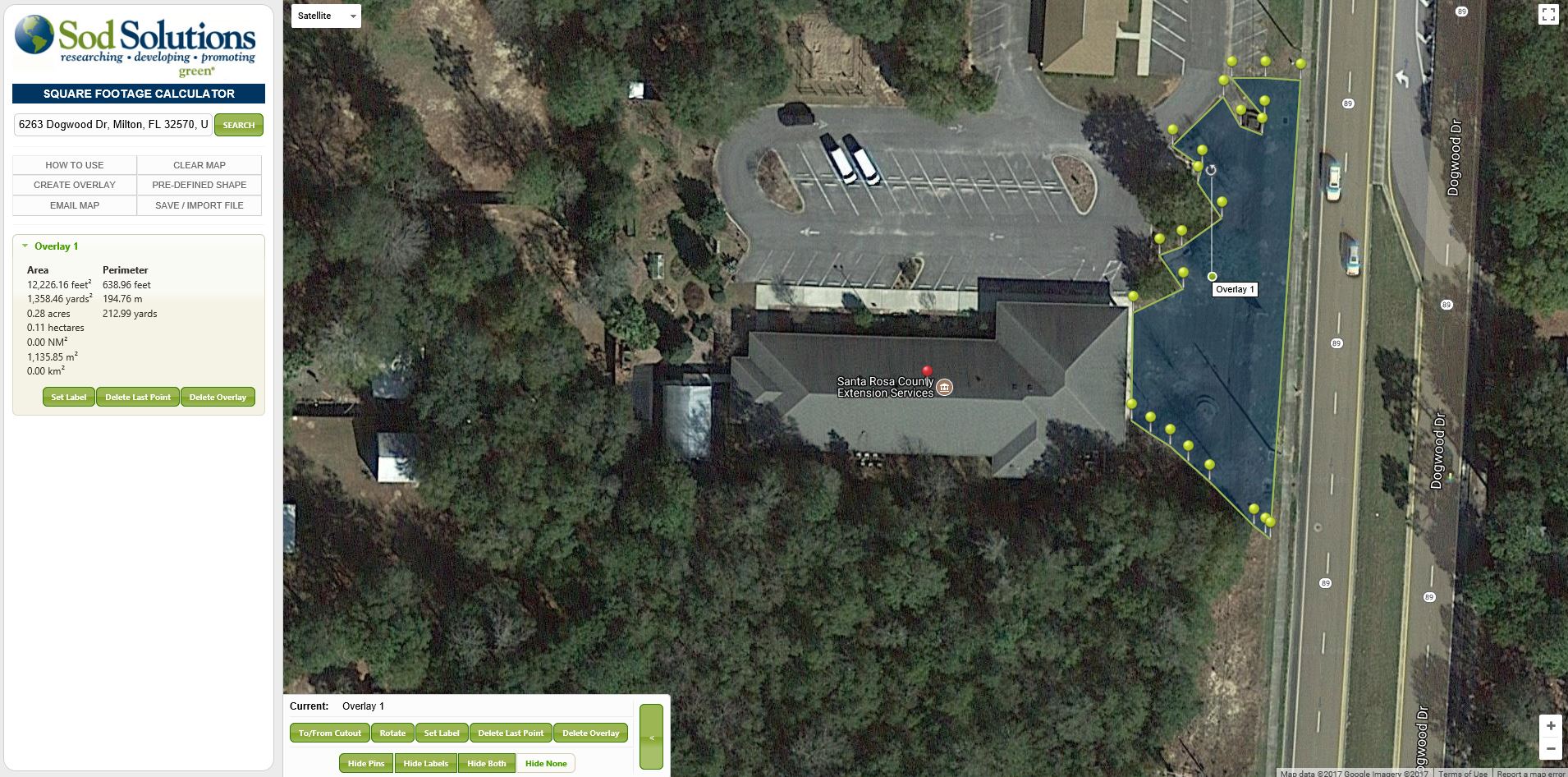
by Mary Salinas | Aug 25, 2017
After you have chosen the right fertilizer, fungicide, herbicide or insecticide to apply to your landscape, the question becomes: how much do I buy? Labels on these products will tell you how many square feet it will cover – so that leads to the next question: how many square feet of lawn do I have?
Here’s an easy way to determine your square footage. This online tool from Sod Solutions uses GIS mapping to figure it out from the comfort of your lounge chair.
On this front page, search for your address.

A bird’s eye view of your property comes up. Zoom in by using the + sign in the lower right corner of the screen.
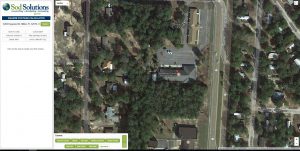
Plot points on the area you want to measure. This makes it so easy to measure those curved and odd-shaped areas!
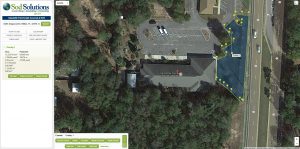
The calculation of the area in square feet, yards, and acres is displayed on the left side. The perimeter is also calculated; that might be handy for determining the length of a fence line.
For more information:
Your Florida Lawn website
The Florida Fertilizer Label
Interpreting Pesticide Label Wording
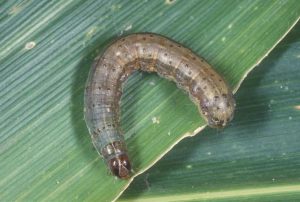
by Sheila Dunning | Aug 17, 2017
If you are one of the many that have taken advantage of the frequent rain in order to establish a new lawn, keep an eye open for “grass worms”. Though truly caterpillars, not worms, these destructive, chewing insects can wreak havoc on new sod.

Sod Webworm Photo by: Lyle Buss UF
Tropical sod webworm larvae are destructive pests of warm season turfgrasses in the southeastern U.S. especially on newly established sod. Larval feeding damage reduces turfgrass aesthetics, vigor, photosynthesis and density, which is very evident on finer-bladed grasses such as bermudagrass and zoysiagrass. Adults, a dull brown colored moth about ¾ inch long, rest in sheltered and shrubby areas during the day and are active at dusk. Females deposit clusters of 10-35 eggs on the upper surface of grass blades. The eggs hatch in 3-4 days and develop from a 1 mm long caterpillar to one over 11 mm long through six instars within 21 to 47 days, depending on temperature. Larval feeding occurs at night, leaving the grass looking ragged, shortened and missing.
Control should be against damaging larvae, not the flying moths. However, insecticidal soap applications to moth harboring areas can reduce re-population frequency if such areas are located. Soil-drenching soap flushes can be used to find the caterpillars, especially in dry and hot grass areas. Bacterial-based insecticides will control sod webworm caterpillars without impacting beneficial species as long as they are applied with each flush of grass growth.
Excessive fertilizing will lead to caterpillar outbreaks in lawns. Newly installed sod is usually rich in nutrients and rapid growing, which makes it very attractive to sod webworms. Grass installation over the summer months should be immediately followed by sod webworm treatment.

Fall Armyworm Photo by: Lyle Buss UF
Fall armyworms are also attracted to newly installed sod. They feed any time of the day or night, but are most active early in the morning or late in the evening. The 1 ½ inch long gray and white moth lays about 1,000 eggs in multiple masses on any vegetation. Two to 10 days later, the small caterpillar hatches and begins to grow to nearly 2 inches long over a two week period. The fall armyworm is easily recognized by its dark head marked with a distinct pale-colored inverted Y and the long black stripe running along each side of its body. These aggressive feeders “march” rapidly across grassed areas consuming every above-ground plant part. While bacterial-based insecticides will reduce the numbers, control of armyworms usually requires synthetic insecticides. Diligent inspection and early pesticide application is critical to establishment of new sod installed during the summer months.















